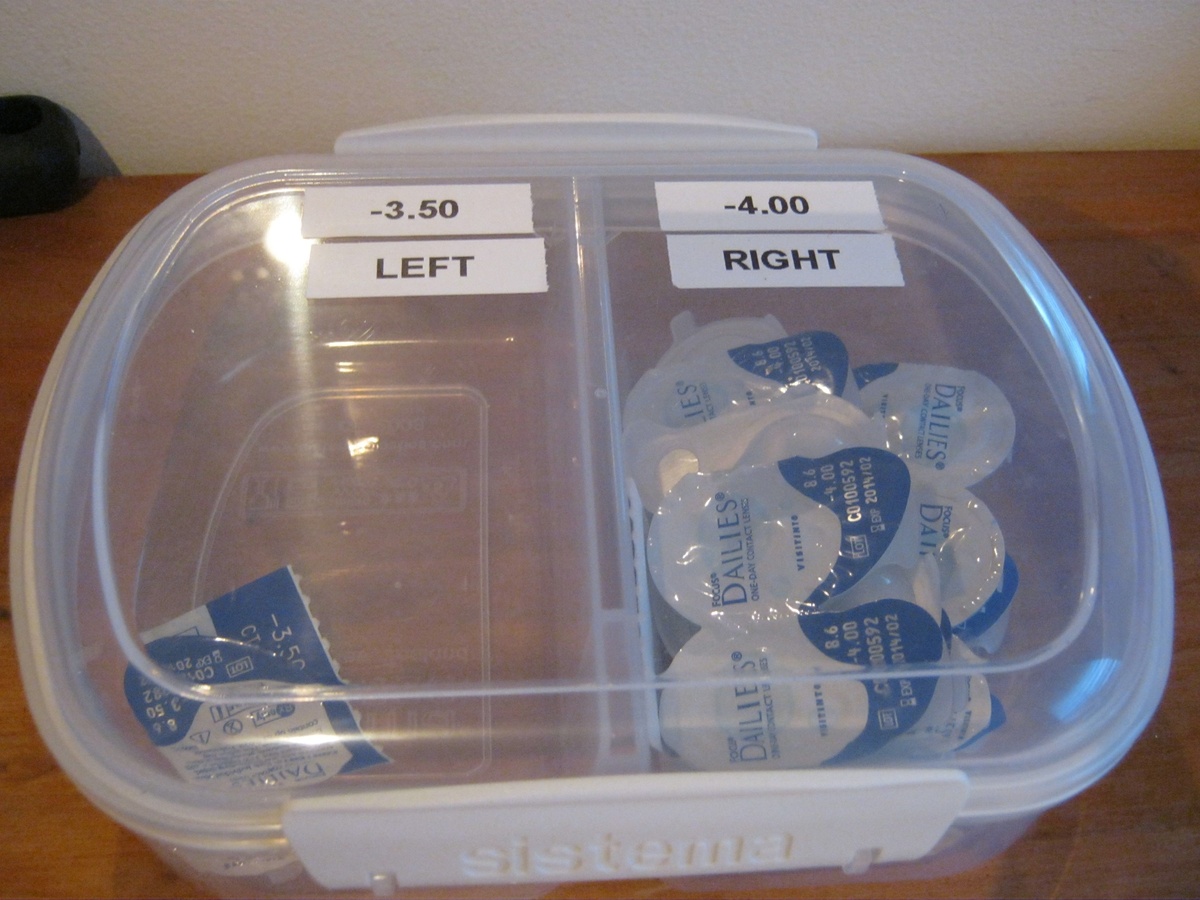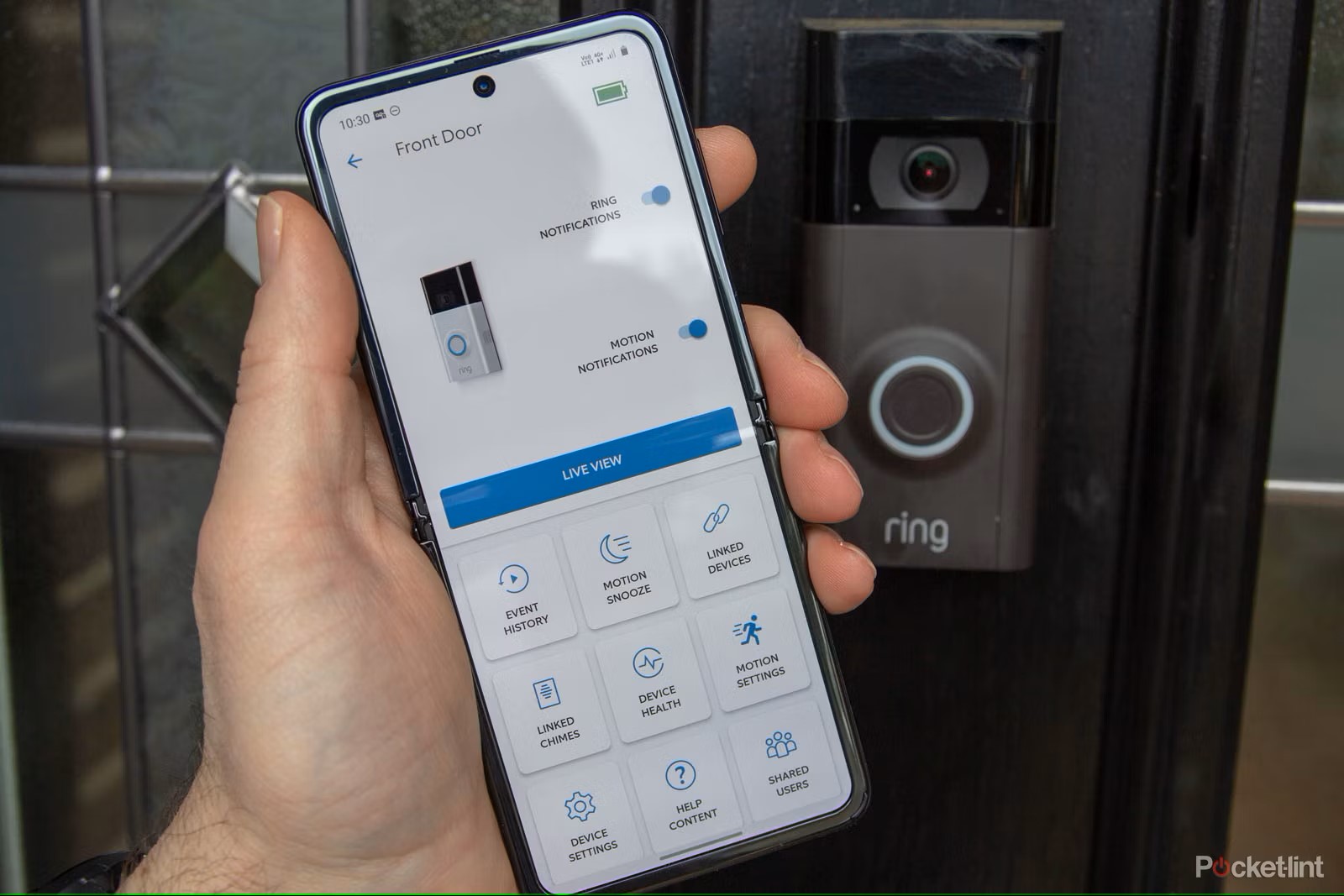

Articles
How To Store Contacts
Modified: January 6, 2024
Learn the best practices for storing your contacts with these informative articles. Find out how to keep your contacts organized and easily accessible.
(Many of the links in this article redirect to a specific reviewed product. Your purchase of these products through affiliate links helps to generate commission for Storables.com, at no extra cost. Learn more)
Introduction
Storing contacts has become a necessity in today’s digital age. With the increasing reliance on digital devices and the need for seamless communication, having a well-organized and accessible contact list is essential. Whether you’re managing personal relationships or maintaining a professional network, being able to store and retrieve contact information quickly and effortlessly can save time and effort.
In this article, we will explore the importance of storing contacts, discuss basic ways to store contacts, outline strategies for organizing and backing up your contacts, provide tips for managing duplicates, and offer best practices for keeping contact information up to date.
So, if you’re tired of scrambling to find someone’s phone number or email address at the last minute, or if you want to streamline your contact management system, read on to discover how to store your contacts effectively.
Key Takeaways:
- Efficient contact storage is crucial for seamless communication, relationship building, and data protection. Whether using physical address books or digital solutions, organized and up-to-date contacts save time and effort.
- Regularly maintaining and updating contacts, backing up data, and managing duplicates are essential for an efficient contact management system. Implementing best practices ensures security, organization, and accessibility of contact information.
Read more: How To Store Contact Lenses
Importance of Storing Contacts
Storing contacts may seem like a simple task, but its importance should not be underestimated. Here’s why:
- Efficient Communication: Storing contacts allows for quick and easy communication. Instead of searching through your memory or asking around for someone’s contact information, you can simply access your contact list and find the details you need. This saves time and ensures that you can reach out to individuals promptly.
- Building and Maintaining Relationships: Storing contacts enables you to build and maintain relationships. Whether it’s a personal connection or a professional contact, keeping their information readily available allows you to stay connected, schedule meetings, collaborate on projects, and foster long-lasting relationships.
- Accessibility across Devices: Storing contacts electronically ensures that you can access them across multiple devices. Whether you’re using a smartphone, tablet, or computer, synchronizing your contacts allows for seamless access regardless of the device you’re using. This is particularly helpful when you need to contact someone urgently while on the go.
- Preventing Data Loss: By storing your contacts digitally, you can protect them from potential loss or damage. Losing a physical address book or having your phone stolen can result in permanently losing essential contact information. However, with electronic storage and periodic backups, you can safeguard your contacts and have peace of mind that they can be easily retrieved in case of any unforeseen events.
- Effortless Organization: Storing contacts digitally also allows for effortless organization. With features like categorization, sorting, and search functions, you can organize your contacts in a way that makes sense to you. This makes it easier to find a specific contact or group contacts based on criteria such as family, friends, colleagues, or clients.
In summary, storing contacts is crucial for efficient communication, relationship building, accessibility, data protection, and effortless organization. By recognizing the importance of storing contacts, you can take steps to establish an effective contact management system that will benefit you both personally and professionally.
Basic Ways to Store Contacts
There are various ways to store contacts, ranging from traditional physical address books to modern digital solutions. Let’s explore the basic methods:
- Physical Address Book: The oldest and most traditional way to store contacts is by using a physical address book. These books are typically made of paper or leather and contain pages where you can write down contact information. While physical address books offer a tangible and nostalgic feel, they can be cumbersome to carry around and limited in terms of search capabilities and organization.
- Digital Devices: With the advent of smartphones, tablets, and computers, storing contacts digitally has become the norm. Most electronic devices come with built-in contact management apps or address books where you can input and store contact information. These digital solutions provide flexibility, convenience, and easy access to your contacts wherever you go. You can also sync your contacts across devices, ensuring that they are always up to date.
- Cloud Services: Cloud-based contact storage is becoming increasingly popular, thanks to its convenience and accessibility. Cloud services such as Google Contacts and iCloud allow you to store and sync your contacts securely on remote servers. This means that you can access your contacts from any device with an internet connection. Cloud storage also offers backup and recovery options, so you don’t have to worry about losing your contacts if your device gets lost or damaged.
When deciding on the best method for storing your contacts, consider factors such as convenience, accessibility, and the level of organization you require. Physical address books are suitable for those who prefer a traditional approach, while digital devices and cloud services offer enhanced features and flexibility.
Whichever method you choose, it’s important to ensure that your contact information is accurate and up to date. Regularly review and update your contacts to maintain their accuracy and relevancy.
Organizing Contacts
Once you have stored your contacts, it’s important to have an organized system in place to easily locate and manage them. Here are some effective ways to organize your contacts:
- Categorizing by Relationship: One way to organize your contacts is by categorizing them based on the nature of your relationship. For example, you can create categories such as family, friends, colleagues, clients, or vendors. This allows you to quickly find contacts within specific groups and facilitates targeted communication.
- Sorting Alphabetically: Sorting your contacts alphabetically by last name is a common and straightforward way to organize them. This makes it easier to locate a contact by searching for their name in alphabetical order. Many contact management apps and software offer automatic alphabetical sorting options, saving you the effort of manually rearranging your contacts.
- Grouping by Importance: Another way to organize your contacts is by importance. You can create groups or tags such as high priority, medium priority, or low priority. This enables you to prioritize your communication and ensure that you give proper attention to contacts based on their significance or urgency.
It’s worth noting that many contact management apps and software offer features to facilitate organization. These include the ability to add tags, create custom fields, and set reminders for follow-ups. Take advantage of these features to customize your organization system according to your preferences and needs.
Remember to regularly review and update your contacts’ information to ensure accuracy and relevancy. Remove or update contacts for individuals who are no longer relevant or have changed their contact details. By keeping your contacts organized and up to date, you’ll have a streamlined system that saves you time and reduces the chances of miscommunication.
Backing Up Contacts
Backing up your contacts is crucial to ensure that you don’t lose valuable information in case of device failure, loss, or accidental deletion. Here are some effective ways to back up your contacts:
- Exporting to a CSV File: Many contact management apps and software offer the option to export your contacts as a CSV (Comma-Separated Values) file. This file format is widely supported and can be easily imported into other contact management systems or spreadsheet software. By exporting your contacts to a CSV file, you create a backup that can be stored on your computer or other storage devices.
- Syncing with Other Devices: If you store your contacts on multiple devices, it’s important to enable syncing between them. This ensures that any changes or additions made on one device are automatically reflected on the others. For example, if you add a new contact on your smartphone, it will also appear on your tablet or computer if syncing is enabled. This not only keeps your contacts up to date but also serves as a form of backup across your devices.
- Using Cloud Backup Services: Cloud backup services, such as Google Drive, Dropbox, or iCloud, provide an additional layer of security and convenience for backing up your contacts. These services automatically store your contacts on remote servers, ensuring that even if your device is lost, damaged, or reset to factory settings, you can easily restore your contacts to a new device. Cloud backup services often offer seamless integration with contact management apps, making it a hassle-free way to protect your contacts.
It’s important to regularly perform backup routines to ensure that your contacts are continuously protected. Set reminders or establish a schedule for backing up your contacts, whether it’s weekly, monthly, or quarterly. This way, you can rest assured knowing that you have a recent backup in case of any unexpected events.
Remember to test your backup files periodically to confirm that they can be successfully imported or restored. It’s better to be proactive and ensure the integrity of your backups rather than discovering issues when you actually need to restore your contacts.
Store contacts in a digital address book or cloud-based platform to ensure easy access and backup. Keep the information organized with categories or labels for quick retrieval.
Read more: How To Store Contact Lens
Managing Duplicates
Duplicate contacts can clutter your contact list, cause confusion, and lead to communication errors. Therefore, it’s essential to manage and merge duplicate entries effectively. Here are some ways to handle duplicate contacts:
- Manual Deletion: One way to manage duplicates is by manually deleting them. Review your contact list regularly and look for entries that appear multiple times. Compare the contact details and decide which version to keep. Delete the duplicates to maintain a clean and organized contact list. However, this method can be time-consuming, especially if you have a large number of contacts.
- Using Duplicate Contact Apps: Several apps and software are specifically designed to identify and handle duplicate contacts. These tools scan your contact list and detect entries with similar or identical information. They provide options to merge or delete duplicates automatically, simplifying the process and saving you time. Some popular duplicate contact apps include Clean My Contacts, Simpler Merge Duplicates, and Contacts Optimizer.
- Merging Duplicate Entries: Another approach is to merge duplicate entries manually. Instead of deleting one of the duplicates, you can combine their information into a single, comprehensive contact. Check for any conflicting details and make necessary adjustments. Merge their phone numbers, email addresses, and other relevant information to create a consolidated and up-to-date entry.
When managing duplicates, it’s important to exercise caution to avoid accidentally deleting or merging valid contacts. Take your time to review and verify the information before making any changes. Additionally, consider enabling automatic duplicate detection and merging features in your contact management app to prevent future duplicates from occurring.
Regularly managing and eliminating duplicate contacts will ensure that your contact list remains organized, concise, and efficient. It will also contribute to smoother communication and reduce the chances of reaching out to the wrong people.
Keeping Contact Information Up to Date
Maintaining accurate and up-to-date contact information is crucial for effective communication. Here are some best practices to ensure that your contact information remains current:
- Regularly Reviewing Contacts: Set aside time periodically to review your contact list. Verify if the contact details are still accurate and relevant. Remove any contacts that are no longer necessary or have become outdated. This practice helps keep your contact list streamlined and up to date.
- Verifying Contact Details: When reviewing your contacts, take the opportunity to verify the accuracy of their contact information. Double-check phone numbers, email addresses, and other relevant details. If you notice any discrepancies or uncertainty, reach out to the contact directly to confirm their information. This step ensures that you have the most reliable and current contact details.
- Updating Information Promptly: Whenever you receive new contact information or someone shares updated details with you, make it a habit to update your contact list promptly. Whether it’s a phone number, email address, or a change in job title, ensure that you keep your records current to avoid any future miscommunication.
Additionally, leverage the features provided by contact management apps and software to streamline the process of updating contact information. Many apps allow you to edit and update contact details directly within the app or offer automatic syncing with online directories, social media profiles, or business databases, which can help keep your contacts’ information up to date.
Remember that contact information can change frequently, especially for professional contacts. Make it a habit to update your contacts regularly, as this will save you time and prevent any potential misunderstandings or missed opportunities.
Best Practices for Contact Storage
When it comes to contact storage, implementing best practices ensures the security, organization, and accessibility of your contact information. Here are some key best practices:
- Security Measures: Protecting the privacy and confidentiality of your contacts is paramount. Use secure methods to store your contacts, such as password-protecting your devices and utilizing encryption features. Additionally, be cautious when sharing your contact files with others and avoid storing sensitive information unnecessarily.
- Regular Maintenance: Regularly maintain and update your contact list. Remove outdated or obsolete contacts, verify the accuracy of contact details, and merge or delete duplicates. This ongoing maintenance keeps your contact list streamlined and prevents clutter or confusion.
- Integration with other Apps and Services: leverage the integration capabilities of your contact management app or software with other applications and services you use. For example, integrating with your email client ensures easy access to contact information while composing emails. Similarly, integration with calendar apps can simplify scheduling and planning.
By implementing these best practices, you can ensure the security, organization, and accessibility of your contact information. Take the necessary steps to protect your contacts, regularly maintain your contact list, and integrate your contacts with other apps and services to enhance your productivity and efficiency.
Conclusion
Storing and managing contacts effectively is essential in today’s fast-paced and digital world. With the numerous ways to store and organize contact information, it is important to find a method that suits your needs and preferences. Whether you choose a physical address book, digital devices, or cloud services, the goal is to have an organized and easily accessible contact list.
By organizing contacts based on relationships, sorting them alphabetically, or grouping them by importance, you can locate the right contact quickly and engage in efficient communication. Additionally, backing up your contacts is crucial for safeguarding against data loss. Exporting them as a CSV file, syncing with other devices, and using cloud backup services provide peace of mind knowing that your contacts are secure and retrievable.
Managing duplicates is another important aspect of maintaining an organized contact list. Whether you manually delete duplicates, use specialized apps, or merge duplicate entries, the goal is to have a clean and streamlined contact list free from confusion and redundancies.
Lastly, keeping contact information up to date ensures effective communication. Regularly reviewing and verifying contact details, as well as promptly updating any changes, reduces the chances of miscommunication and provides accurate information when you need it most.
Implementing best practices for contact storage, such as ensuring security measures, performing regular maintenance, and integrating contacts with other apps and services, enhances the overall management and functionality of your contact list.
In conclusion, storing and managing contacts efficiently is vital for establishing and maintaining relationships, streamlining communication, and saving time. By adopting the right methods, organizing contacts effectively, and following best practices, you can have a well-maintained and easily accessible contact list that contributes to your personal and professional success.
Frequently Asked Questions about How To Store Contacts
Was this page helpful?
At Storables.com, we guarantee accurate and reliable information. Our content, validated by Expert Board Contributors, is crafted following stringent Editorial Policies. We're committed to providing you with well-researched, expert-backed insights for all your informational needs.















0 thoughts on “How To Store Contacts”